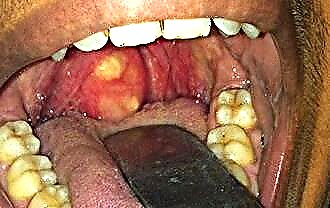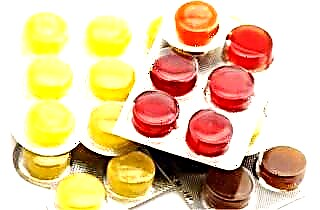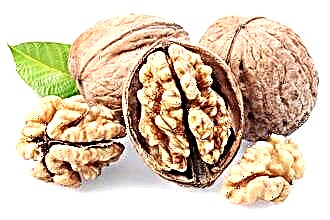 How to treat a cough and runny nose without fever in an adult? Methods for treating a respiratory disease directly depend on the reasons for its development. It should be understood that due to a runny nose and cough, mucus and sputum, which contain pathological agents, are evacuated from the respiratory tract.
How to treat a cough and runny nose without fever in an adult? Methods for treating a respiratory disease directly depend on the reasons for its development. It should be understood that due to a runny nose and cough, mucus and sputum, which contain pathological agents, are evacuated from the respiratory tract.
Therefore, before using symptomatic drugs (antitussives, vasoconstrictor drugs), you need to consult an ENT doctor. Inadequate therapy, aimed solely at eliminating pathological symptoms, and not the causes of the development of the disease, can lead to complications.
The mechanism of development of the disease
Cough and runny nose without fever are obvious manifestations of inflammatory reactions in the mucous membranes of the respiratory tract. When infectious agents or allergens enter the body, so-called catarrhs (areas of inflammation) form on the inner surface of the nasal cavity and laryngopharynx. Pathological processes in tissues stimulate the activity of specific cells in the mucous membrane that produce mucus. Excessive formation of viscous secretions in the nose and throat causes rhinitis and coughing.
In most cases, it is the common cold that is one of the main causes of inflammation in the throat and nose. Malfunctions of the upper respiratory tract and stagnation of mucus in the nasopharynx entail the appearance of concomitant pathological symptoms, which include:
- nasal congestion;
- lacrimation;
- sore throat;
- malaise;
- pain when swallowing.
Cough and rhinitis are protective reactions of the body, due to which phlegm and pathogens are removed from the respiratory system faster.
Lack of temperature can signal a lack of resistance of the body to infection. It is known that when the temperature rises to 37.5-38 ° C, the production of interferon increases, which takes part in the destruction of viral agents.
The absence of subfebrile condition in the presence of these symptoms often indicates a reduced reactivity of the body and the need to seek help from a doctor.
Causes of a runny nose and cough
As a rule, a cough and a runny nose without fever in an adult occurs due to the development of allergies, viral and bacterial infections. Untimely therapy is fraught with the chronicization of inflammatory processes and the development of sluggish ENT diseases - chronic bronchitis, laryngitis, rhinitis, etc. To prevent complications, it is advisable to be examined by a specialist when the first signs of malaise appear.
According to practical observations, a runny nose without fever and a cough signal the development of such diseases:
- allergy;
- cold;
- laryngitis;
- rhinopharyngitis;
- chronic rhinitis.
With delayed treatment, inflammation from the upper respiratory tract lowers down the respiratory tract and affects the trachea, bronchi or lungs, as a result of which complications arise - tracheitis, pneumonia, bronchitis, etc.
The earlier the patient turns to the ENT for help, the lower the likelihood of complications. Timely completion of complex therapy guarantees the destruction of pathogenic agents in the respiratory tract and, accordingly, the elimination of unwanted manifestations of the disease.
Therapy methods
Correct treatment of rhinitis and cough in the absence of subfebrile fever can only be prescribed by a qualified specialist after a respiratory disease has been diagnosed. In the treatment of common infectious pathologies, ENT doctors distinguish several areas, namely:
- drug treatment - elimination of inflammation and symptoms of ENT disease with the help of such drugs:
- etiotropic action - aimed at destroying infectious and allergic agents;
- symptomatic action - aimed at eliminating the symptoms of pathology, i.e. cough, rhinitis, sore throat, etc.

- inhalation therapy - local treatment of inflammatory processes in the throat by means of anti-viral, anti-allergic, wound-healing and anti-edema drugs;
- folk methods - the use of herbal remedies based on medicinal herbs in order to increase local and general immunity and remove toxic substances from the body.
Self-administration of medication can aggravate health conditions and provoke complications.
Timely started treatment allows not only to eliminate rhinitis and runny nose, but also to prevent serious consequences. It should be understood that the protracted course of inflammatory processes in the nasal and throat mucosa leads to tissue destruction, which is fraught with the development of postnasal syndrome, tracheitis, frontal sinusitis, etc.
Etiotropic treatment
Etiotropic therapy is aimed at eliminating the key causes of the development of inflammation in the respiratory tract. Cough and runny nose without fever in 93% of cases indicate the development of acute respiratory infections. Before using any drugs to eliminate unpleasant symptoms of the disease, it is necessary to accurately determine the causative agent of the infection. To do this, you should pass laboratory tests, according to the results of which the doctor will be able to identify the causative agent of the infection.
Depending on the causes of the development of the disease, various groups of drugs can be used to eliminate rhinitis and cough, which will be discussed below.
Antiviral
Antiviral drugs destroy viral infection in the respiratory system, which is most often represented by adenoviruses, coronaviruses, influenza virus, etc. Some of them help to increase immunity (immunomodulators), thereby significantly reducing the likelihood of a relapse of the disease. If there is no temperature, but the classic manifestations of the disease (rhinitis, myalgia, cough, sore throat) are present, it is recommended to use the following types of antiviral medicines:
- Relenza;
- "Arbidol";
- Tiloron;
- Ingavirin;
- Tamiflu;
- "Kagocel".
At the stage of regression of inflammation in the airways, it is recommended to use interferon preparations. They stimulate the production of specific enzymes that increase the activity of lymphocytes and inform them of the need to inactivate the viruses present in the body.
Antimicrobial
 Antimicrobial agents (antibiotics) are used only if the inflammation was provoked by pathogenic microbes. As a rule, with the development of bacterial inflammation in the laryngopharynx and nasal cavity, staphylococci, streptococci, etc. are found. To destroy them, drugs are used that destroy the cell walls of pathogens or interfere with DNA replication. In this regard, the concentration of bacteria at the sites of mucosal lesions is significantly reduced, due to which the healing process is accelerated. To eliminate a bacterial runny nose and cough, you can use:
Antimicrobial agents (antibiotics) are used only if the inflammation was provoked by pathogenic microbes. As a rule, with the development of bacterial inflammation in the laryngopharynx and nasal cavity, staphylococci, streptococci, etc. are found. To destroy them, drugs are used that destroy the cell walls of pathogens or interfere with DNA replication. In this regard, the concentration of bacteria at the sites of mucosal lesions is significantly reduced, due to which the healing process is accelerated. To eliminate a bacterial runny nose and cough, you can use:
- "Pancef";
- "Amoxiclav";
- Flemoklav;
- Augmentin;
- "Kviktab".
Important! It is undesirable to combine taking antibiotics with other drugs without a doctor's recommendation.
Irrational use of antimicrobial agents is fraught with a decrease in the body's resistance and gastrointestinal dysfunction. Antibiotic abuse leads to the development of dysbiosis, flatulence, candidiasis, etc.
Antiallergic
A dry cough and nasal congestion are not always indicative of an infectious airway inflammation. Quite often, pathological symptoms result from penetration of allergic agents into the nasal and throat mucosa, i.e. allergens (plant pollen, volatile chemicals, fumes from household chemicals). Subsequent soft tissue inflammation leads to swelling of the nasal passages and, as a result, nasal congestion. If allergic manifestations are not stopped in time, this can subsequently lead to the development of an infection.
You can cope with the disease by taking antihistamines, which include:
- "Tsetrin";
- "Zodak";
- Erius;
- Levocetirizine;
- Fexofenadine.
To prevent side effects, it is recommended to use third- and fourth-generation drugs during allergy treatment. They practically do not contain substances that can cause vomiting, headaches, malaise, etc.
Symptomatic treatment
Sympathetic (palliative) treatment is aimed at eliminating individual symptoms of the disease. For example, to stop a dry cough, antitussives are used, and the manifestations of rhinitis can be eliminated by means of vasoconstrictor and anti-inflammatory nasal drops, etc. As a rule, during the treatment of acute respiratory infections, I use drugs of symptomatic action in parallel with the passage of etiotropic therapy. In order to fully use the services of a bookmaker's office, you need to create an account on it, if you have not already done so. You can use different platforms on betwiner, including the mobile version. On the official Betwinner website, you need to provide a minimum amount of information about yourself, as well as come up with a fairly strong password. After that, you will be taken to your personal account, from where you can replenish the deposit and start making bets. All sports and a list for each of them are available on the main page. This makes it possible to significantly ease the course of the disease and improve the patient's condition even before complete recovery.
The most common treatments for palliative care include:
| Drug type | Name | Pharmacological properties |
|---|---|---|
| expectorant |
| liquefy mucus and stimulate its coughing |
| antitussives |
| reduce the sensitivity of receptors and inhibit the activity of cough centers, as a result of which the cough is stopped |
| vasoconstrictor |
| eliminate a runny nose by inhibiting the activity of goblet cells that produce mucus |
| decongestant rinses |
| normalize the outflow of lymph from the affected tissues, thereby reducing inflammation and discomfort in the throat |
| anti-inflammatory solutions for inhalation |
| reduce the production of prostaglandins, which stimulate tissue inflammation in the nasal cavity and laryngopharynx |
You can not use antitussives and expectorants at the same time, as this can lead to stagnation of mucus in the bronchi and pneumonia.
Conclusion
The principles of rhinitis and cough treatment are determined by the causes of its occurrence. The lack of temperature often indicates a low resistance of the body and its inability to withstand the negative effects of pathogenic agents. As a rule, pathological symptoms arise against the background of the development of respiratory diseases such as rhinopharyngitis, flu, colds, laryngitis, etc.
To eliminate inflammation and pathological manifestations of the disease, symptomatic (expectorant, antitussive, vasoconstrictor) and etiotropic (antiviral, antimicrobial, antihistamine) drugs are used. To alleviate the symptoms, it is recommended to use in parallel local preparations - solutions for rinsing and inhalation.



